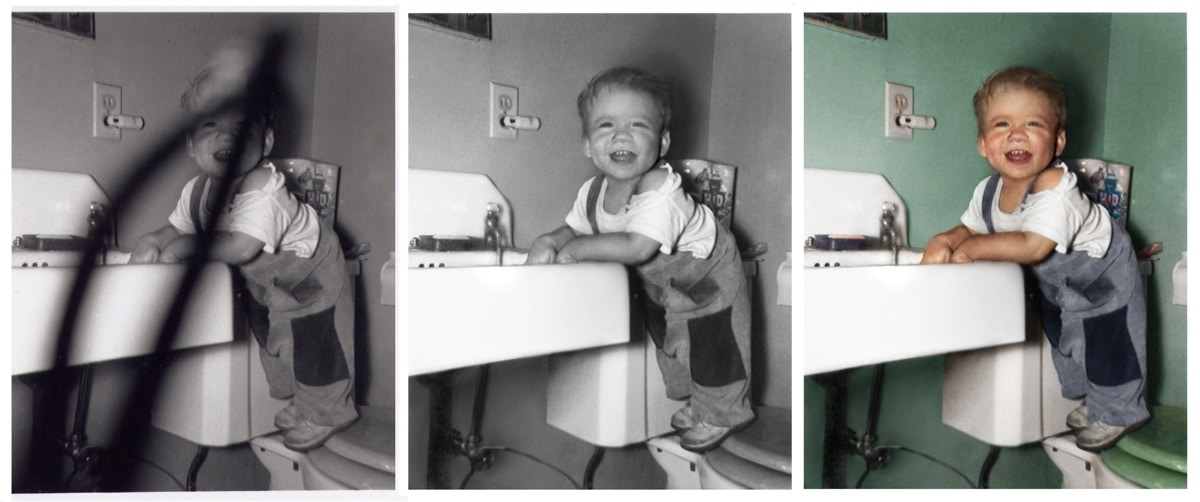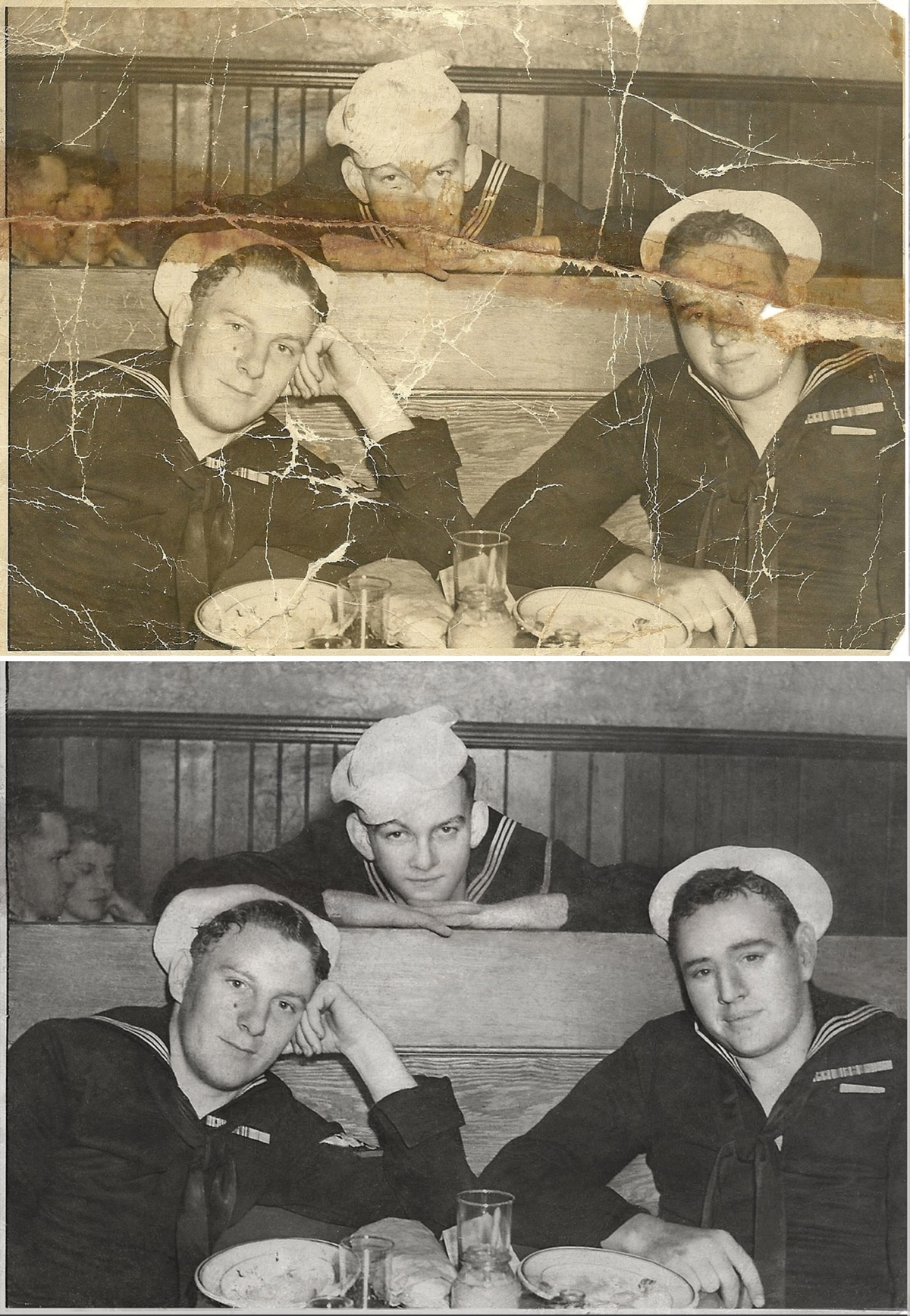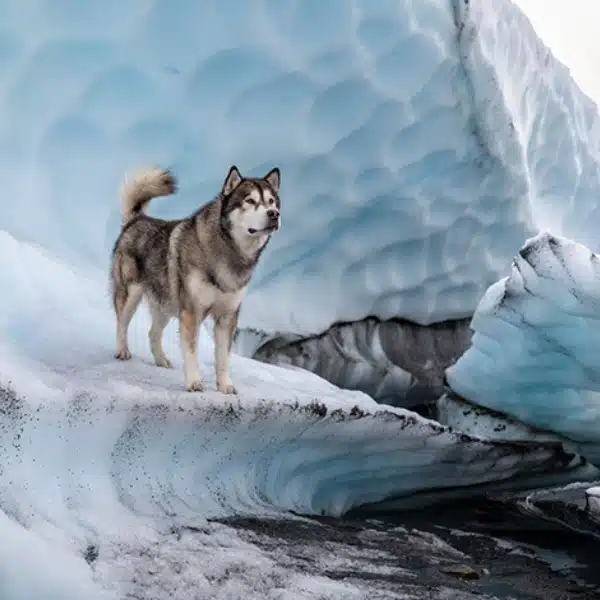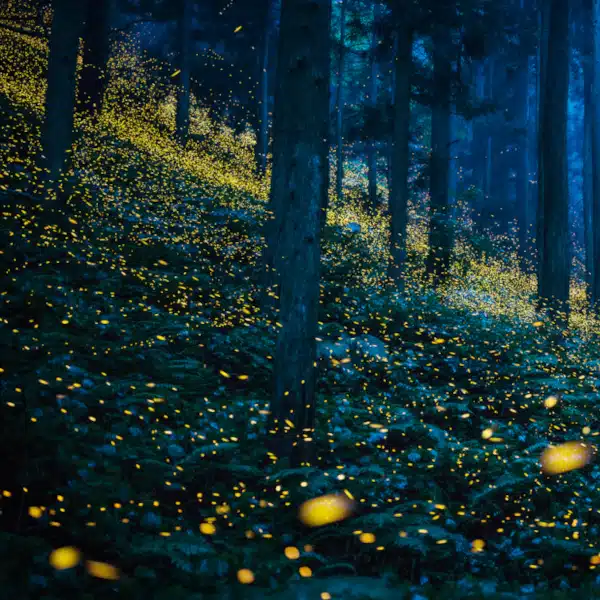
A man’s only photograph of his mother, who died in childbirth.
Using her artistic skills in a unique way, illustrator Michelle Spalding has a knack for photo restoration. As a hobby that's now gone viral, Spalding has been able to transform seemingly unsalvageable work into fresh photographs that show no signs of damage. After publishing some of her work online, her photo restoration work has gotten increased attention, which means that the number of requests she receives for help have skyrocketed.
As restoration and retouching are a side interest, rather than her main artistic practice, Spalding often takes on cases where the sentimental value of the image is quite high. Whether it be the only photograph a son had of his dead mother or a woman's only photograph of herself as a child with her grandparents, the images contain precious memories. Thanks to Spalding's Photoshop skills and her attention to detail, the owners of the photos are able to reclaim these nearly-lost remembrances.
We had the opportunity to chat with Spalding about her photo restoration work, what sparked her interest in it, and her work as an illustrator. Check out My Modern Met's exclusive interview below and see more incredible photo restorations.

A woman’s only photo of herself as a child, and the only photo of her grandparents.
What first got you interested in photo restoration?
I first became interested in photo restoration in art school. We had courses in photography, where traditional methods were still taught in a photo lab. We learned how to retouch photos using pigment dyes and processing/lightroom effects. At my first job out of art school, I worked for a magazine. We transitioned to digital photography and editing, and used one of the first versions of Photoshop. I learned photo retouching for our own content and also offered it as an option to our advertisers.

A vintage photo of a father when he was a small child.
What's the story behind the first photo you ever restored and how did you go about getting the skills to do so?
Photo restoration was a natural transition from retouching. The magazine had an archive of old artwork and photography, which would sometimes be published in our historical articles or in other publications. I believe some of my very first restoration work was early photos taken at the Kellogg Ranch in the 1920s. Many of those photos were historically important but in rough shape.

A man’s only photo of his mother from her youth.
Photo restoration isn't your full-time work, so how do people normally find you?
I work as an artist/illustrator these days. Photo restoration is a sideline so I don’t hang out a shingle. It’s very tedious work and unfortunately, my schedule and health don't permit me to do it full-time. When I do have free time, I occasionally take on photo restoration projects. Occasionally, I offer my skills through a subreddit called r/estoration, where people needing photo restoration work can request jobs from amateur and professional photo restorers. All kinds of requests are made there, but I’ll typically only take on photos that are historically important, rare, or sentimental. Other requests come through business contacts or family and friends.

Someone’s parents when they were dating.
How does your work as an illustrator help you with these projects?
My work as an illustrator contributes significantly to photo restoration and retouching. The study of light, anatomy, perspective, etc., makes it possible to believably reconstruct portions of missing or heavily damaged photos. Working as an illustrator helps the eye discern between important details and incidental information. This is especially important in the restoration of faces.

A family requested NICU tubes be removed from their newborn's face.
On average, how much time does it take to restore a photo and what's your creative process?
Many photos take several hours to repair. Since I love a challenge, and I also feel it’s important to be as meticulous as possible in preserving important or beloved images, some heavily damaged photos can take as much as 20 hours to restore.

One of the only photos of a man’s child.
What has been the reaction of clients when they receive their restored photo?
I’ve had so many wonderful reactions from clients. Many are overcome with emotion. I’ve had people tell me their family members cried when seeing old images restored. I even had a gentleman from Europe send me some homemade preserves when his grandson presented him with a restored old photo of him as a young man on his first motorcycle.

This photo of a beloved uncle was chewed by a cat.
Your work has recently gone viral online. How did this feel? Were you surprised by the reaction?
It was fun and exciting. I love that people nowadays can still be inspired and impressed by the work of others. Yes, I was surprised it went viral.

(continued) I’ve had a couple of other viral photoshop pieces over the years. Not for restoration, however. I used to enter photo manipulation contests through a site called Worth1000, now called DesignCrowd. A couple of my silly mashups/chops went viral and eventually became well-known memes, including spider squirrel, peacat, and horse spells horse (this one has made the rounds so many times it’s even on Snopes).

The only surviving photo of a great-great-grandmother as a child.
What do you hope that people take away from your work?
I hope what people take away from my work is that preserving our photographic history is important. In an age where we record our everyday lives in photos from the mundane to the memorable, it’s easy to forget this wasn’t always the case. In times past, photographs were rare, often taken only on special or important occasions. Sometimes the prints and negatives were lost forever to time and damage. I feel it’s important to preserve what we can for future generations.
Check out more unbelievable photo restorations by Michelle Spalding.


A family’s favorite photo of their father as a child.

A favorite photo of a woman’s father holding her as a child.

A man’s only portrait of his mother when she was a young woman.

A family wanted this ancestor’s photo restored.

A photo of someone’s father at his first real job.

The only photo of a man’s father when he was young.

The only surviving photo of someone’s grandpa and his navy buddies.

Over 100-year-old damaged family photo.






















































































